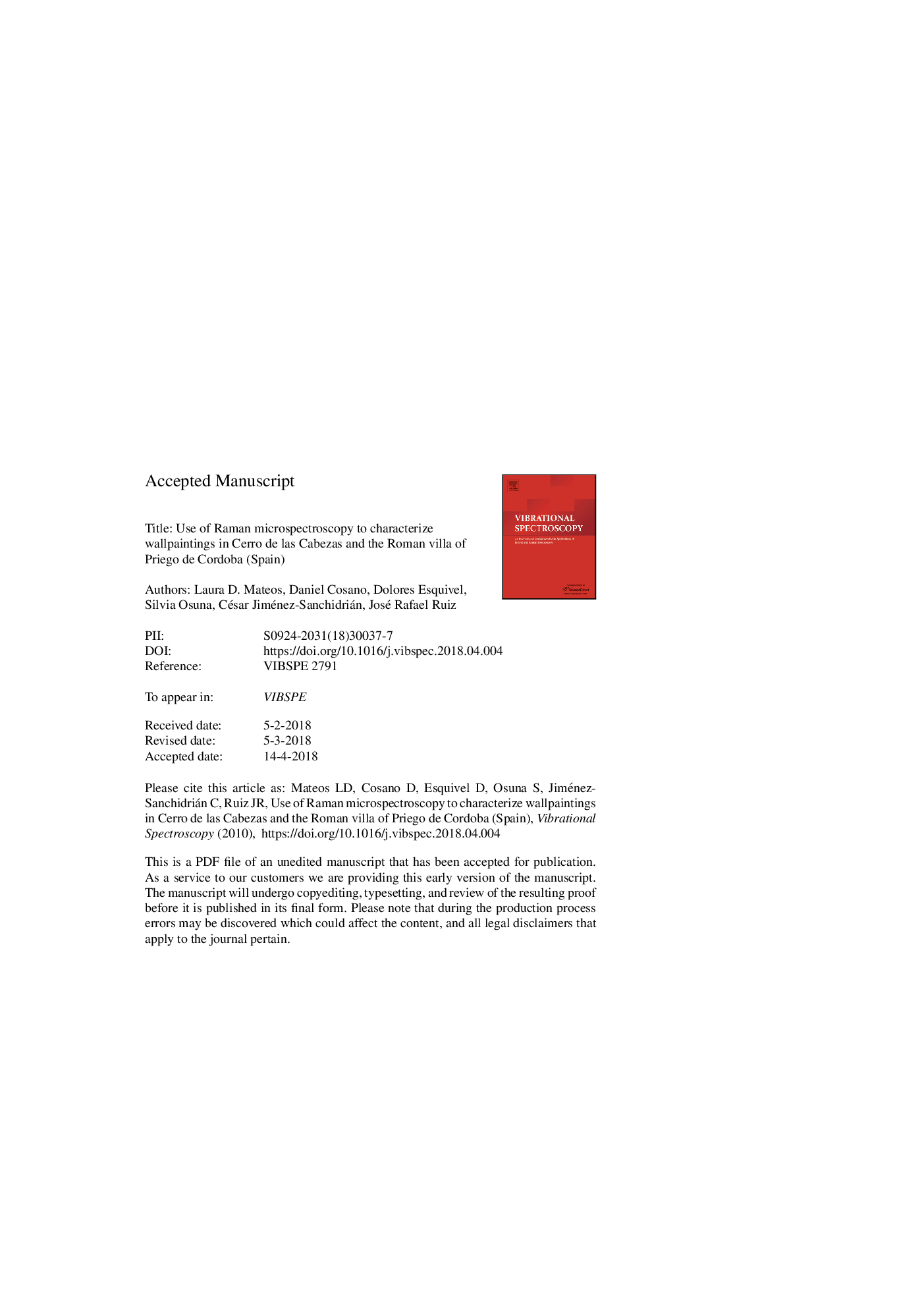| Article ID | Journal | Published Year | Pages | File Type |
|---|---|---|---|---|
| 7690852 | Vibrational Spectroscopy | 2018 | 30 Pages |
Abstract
The analysis by Raman microscopy of several wallpainting fragments found at an archaeological site in Fuente Tojar and in the Roman villa of Priego de Cordoba, both in southern Spain, revealed that the most abundant colours in them were obtained from the usual pigments of the time. Thus, red corresponded to red ochre, which consisted of hematite mainly. Also, yellow came from yellow ochre (goethite), blue from Egyptian blue, and grey hues were obtained from mixtures of coal and calcite occasionally also containing gypsum. The components of some pigments were confirmed by X-ray diffraction spectroscopy. The two spectroscopic techniques were additionally used to examine the mortars and the preparatory layer present in the fragments.
Related Topics
Physical Sciences and Engineering
Chemistry
Analytical Chemistry
Authors
Laura D. Mateos, Daniel Cosano, Dolores Esquivel, Sonia Osuna, César Jiménez-Sanchidrián, José Rafael Ruiz,
